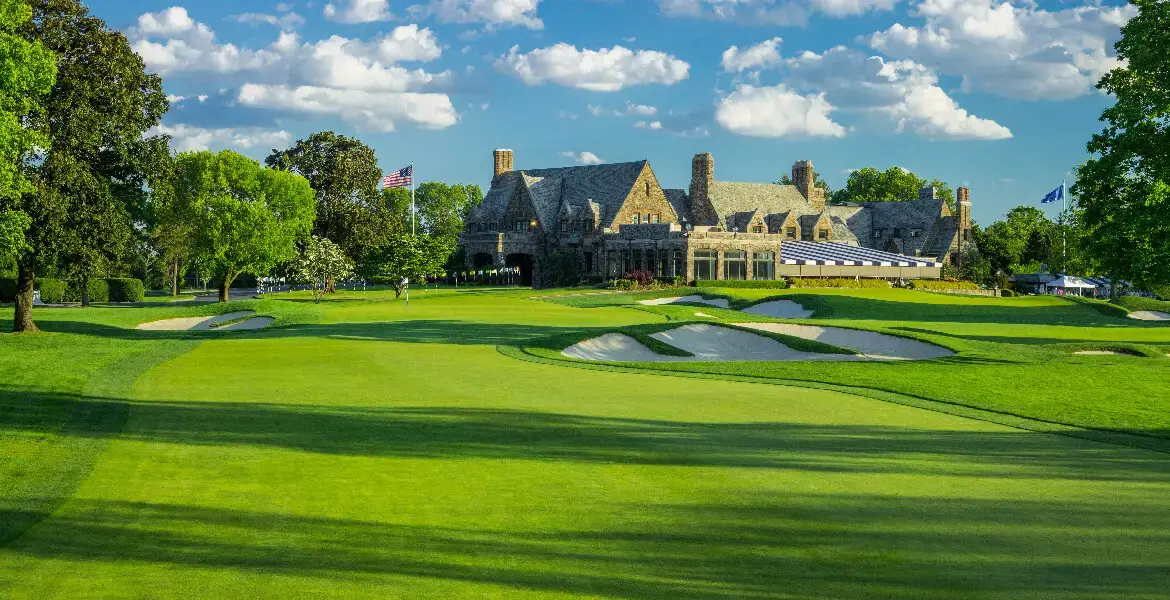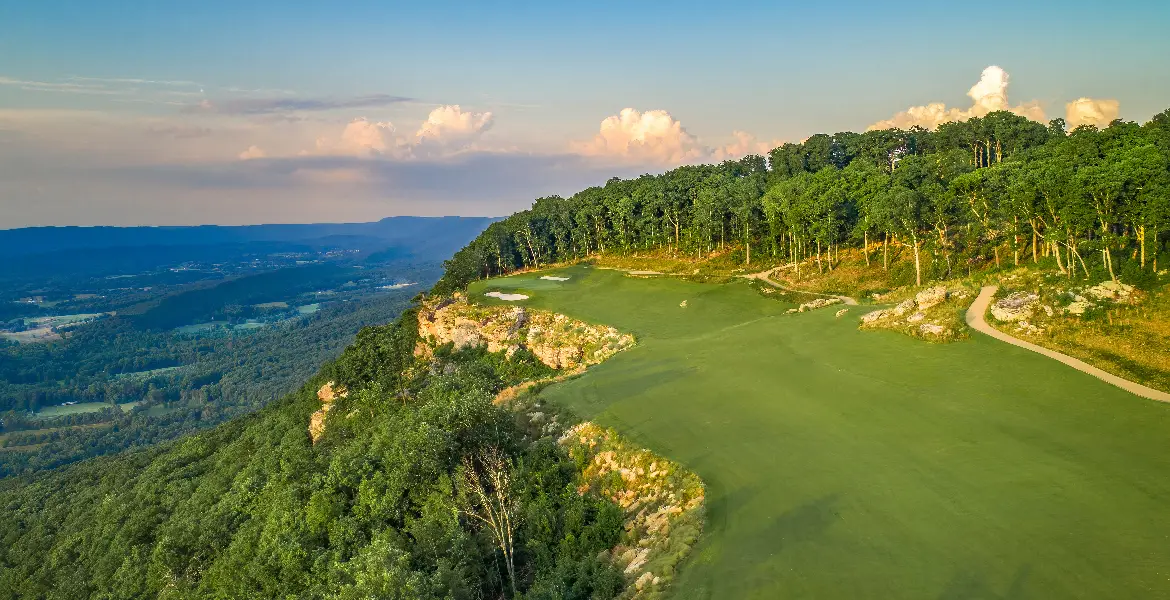Understanding the difference between a renovation and a redesign is a matter of perspective. One affects how the course plays; the other impacts how golfers play it.
In most instances, a golf course renovation will include the rebuilding of green complexes—perhaps reshaping of contours on the putting surfaces—re-grassing (often using a new varietal that’s better suited for the environment), installing new irrigation systems, removing trees, and reconstructing bunkers. There are times when the latter may involve relocating fairway bunkers, but in those instances, such a decision is made to bring those bunkers back into play. Yes, it potentially changes how golfers play the hole, but it’s keeping with the original architect’s intent. For that reason, those projects are almost always deemed restorative or renovations.
A redesign, on the other hand, is a more aggressive transformation of a course.
Here, we spotlight nine noteworthy redesigns that have been completed since 2020.
The Pines at The International Golf Club—Bolton, Mass.
When Bill Coore and Ben Crenshaw arrived on site to begin work transforming the old Pines course into its new iteration, they had to work hard to see it for what it could become, not what it was. That, in itself, was a challenging task, as The Pines—originally a Geoffrey Cornish design—had evolved significantly over the years, most notably growing larger and larger in its attempt to retain accolades as the longest course in the country, if not the world.
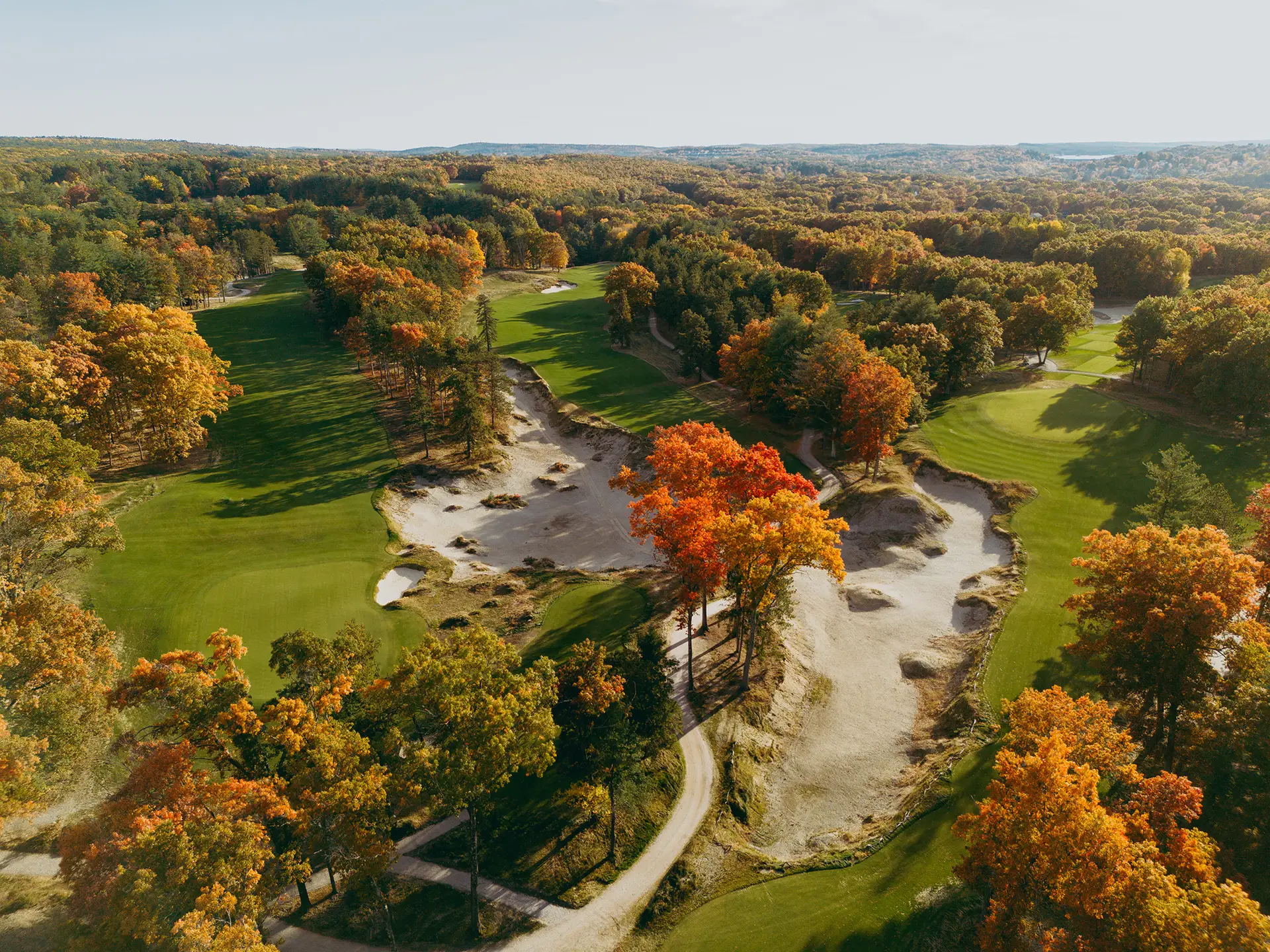
At its peak, The Pines stretched beyond 8,300 yards; but the version that the architecture duo envisioned was almost 20 percent smaller. What it would give back in length, they surmised, it would gain in variety, engaging shot values, captivating topography that embraced the ground game, and a style that rewarded strategy over brute strength. “We took the landforms and a lot of the cleared corridors of the old golf course—not playing in the same direction—and mingled them together and tried to envision a very Old World, New England type of golf course on this landscape,” Coore explains.
The course sparkles as a New World rendition of Britain’s heathland courses, albeit without the copious amounts of heather; and its successful transformation is, in Crenshaw’s estimation, causally linked to the journey upon which it takes golfers. “You can always go to a property and seem some [great] individual holes, but how you link them up and make them part of a chain, and part of a rhythm, and a balance is something [else],” Crenshaw says. “I’m pretty good, but I’m not anything like this guy,” he adds, pointing to his partner. “Bill is the best golf course router that I’ve ever seen.”
Oak Marsh at Omni Amelia Island—Fernandina Beach, Fla.
Depending on who you talk to, Beau Welling’s recent project on the Oak Marsh course at Omni Amelia Island (a Pete Dye creation, circa 1972) might be considered a renovation. It’s an understandable interpretation given that the thicker brush that previously lined the edges of many holes was removed and replaced with sandy waste areas, which both widened some holes by a notable margin and made all of them more playable and forgiving for wayward shots. Several of the bunkers along the perimeters of holes were also removed and replaced with those same natural waste areas. Those changes begin to take Welling’s work into the territory of a redesign, but they’re not what characterize it as such.
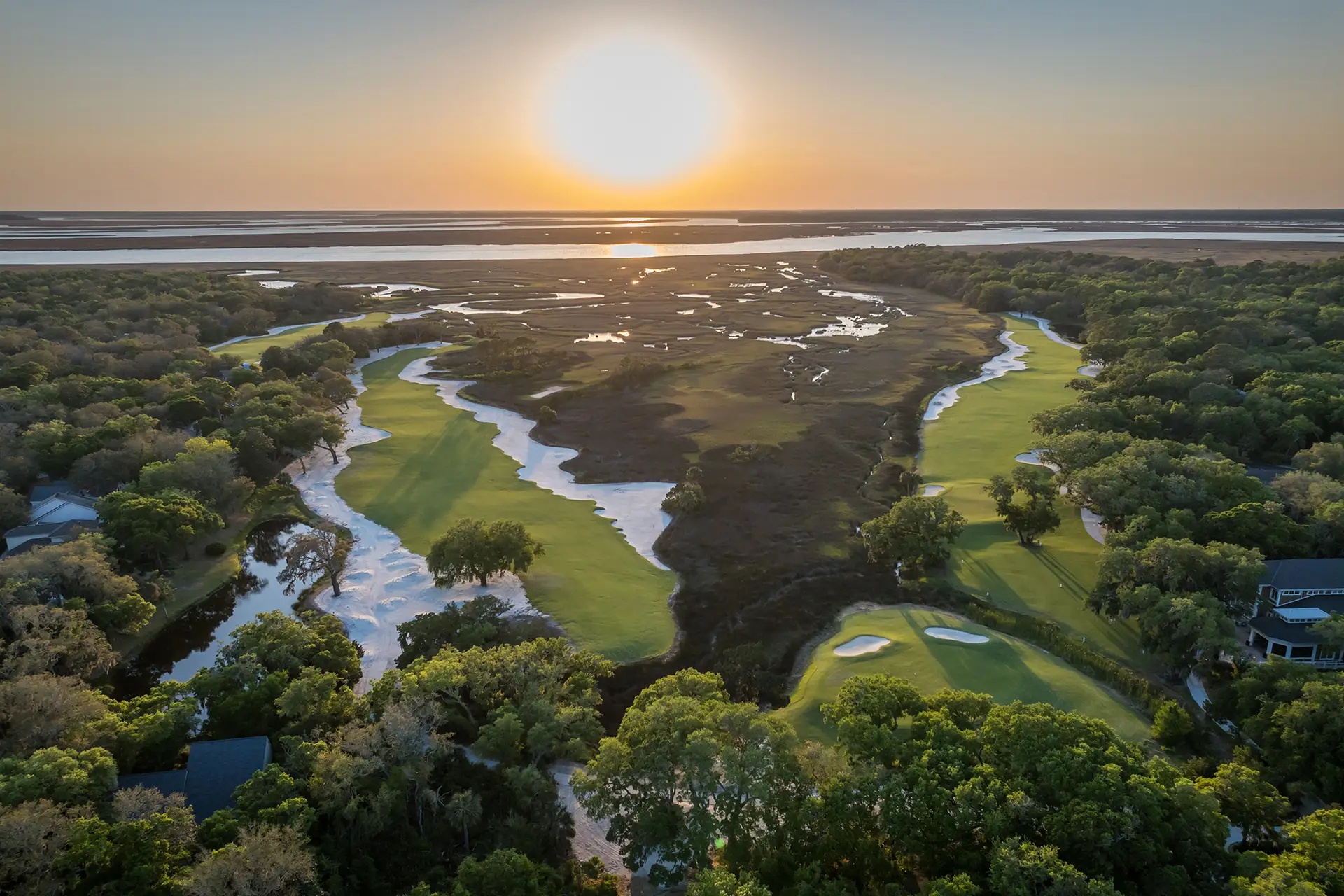
It’s a redesign, at least in my opinion, due to the fact that Welling introduced ribbon teeing grounds, allowing holes to potentially be played longer or shorter than they were previously—not to mention introducing tee shots with new angles to the fairway. Additionally—and more importantly—Welling added shortly mown run-off areas around many of the green complexes. These dramatically change how holes are played around the green and they can dramatically change the outcome of approach shots. “What happens around the greens becomes very important,” Welling explains. “A closely mown area presents more of a hazard for a good player trying to attack, but for a lesser player, it gives them a route to reach the green on the ground.
“We very much tried to take the Pete Dye version of golf and adapt it for the constraints that we’re detailing with and the desire to have this be a bit more accessible to different levels of play.”
Stowe Country Club—Stowe, Vt.
Around the same time that Welling was operating with restraint along the coast of northeast Florida, he was aggressively altering a semi-private country club in northern Vermont, one with roots that can be traced back to the middle of the 20th century. Originally designed by William Mitchell during the 1950s, Stowe Country Club was once an open-to-the-public track that delivered a handful of memorable holes but, as a whole, never fully capitalized on the site’s potential. Too many holes suffered from a design ideology that became popular during the mid-20th-century, whereby greens were heavily guarded by bunkers, especially ones positioned directly in front of the putting surface.

The ongoing project, set for a grand opening in June 2026, is one where Welling has made sweeping changes, pulling some bunkers farther away from the greens but keeping them on the same line, which now allows players to access the greens without having to fly their approach shots all the way there. Elsewhere, some greens were repositioned almost 50 yards away from their original locations, creating new shot angles and promoting the use of contours to get long-distance approaches on or near the putting surfaces. And across much of the property, hundreds of trees were removed, which opens up sightlines of the surrounding landscape, not to mention previously blocked sections of the course.
The back nine saw the most drastic changes in terms of rerouting and the repositioning of holes, and it’s there that the club’s general manager, Michael Harger, believes golfers who were familiar with the old course will feel that the new iteration is vastly different. That said, the new routing and the redesigned holes, although brand new, are certain to create the impression that the course has existed there for a long, long time. “Especially as the fescue grows in and matures over the next couple of years,” Harger acknowledges, “it’s going to feel like a golf course that’s been there for a hundred years.”
North Course at Omni La Costa Resort—Carlsbad, Calif.
When Gil Hanse and Jim Wagner set out to redesign the North Course at Omni La Costa a few years back, they were fixated on two distinctive audiences—the country’s top collegiate players and everyday amateurs. The original Dick Wilson design, circa 1965, was set to host the NCAA Division I national championships for five consecutive years (beginning in 2024) and it needed more than just a facelift if it was going to shine as a championship venue. But for the remaining 50 weeks each of those years, the course would play host to local members and resort guests, so it needed to still be an enjoyable experience for mid- to high-handicappers.

The new course that Hanse and Wagner created has excelled in both arenas. Those familiar with the original design won’t see drastic changes on certain holes—the opening, short par four, for example, looks and plays much like it did in the past. However, in other areas of the course, metamorphoses occurred. The three-hole stretch from 8 to 10 serves as the poster child for that work. Those holes were once accentuated by man-made water hazards, which Hanse never liked. “Dare I say, those holes feel a bit more like they belong in Florida,” he said just as work was commencing across the course’s 215 acres. “I’m hopeful that when we’re done we’ll create holes that you’ve never seen before and in a landscape that’s different and distinctive enough so that people will really appreciate those changes.”
Ultimately, a series of dry washes and barrancas replaced the water, which offer more forgiveness but still penalized the player for offline shots. Hanse also made bigger changes to the length of those holes, shrinking the par-three 8th to a distance no greater than 150 yards, but building a new, heavily guarded plateau green with a steep slope that can funnel errant shots toward the barranca on the right. The end result is a one-shotter with welcoming distance but plenty of danger for players who choose to go flag hunting. “One of those things about those types of holes, when you get a good player, they can’t help but be aggressive,” Hanse explains. “They’re always going to attack with a 9-iron or a wedge in the hands. And if the consequences if they fail makes for a compelling golf course. It’s a nice piece of the puzzle.”
Riverside Course at Atlanta Athletic Club—Johns Creek, Ga.
Prior to 2022, the Atlanta Athletic Club was home to two Robert Trent Jones Sr. designs, the Highlands Course and the Riverside Course, the former of which has hosted several PGA Championships, not to mention a U.S. Open and the Ryder Cup. Three years ago, however, that changed, as Tripp Davis redesigned Riverside, creating a layout that, at times, reflected its former self but in many places delivered an entirely fresh experience.
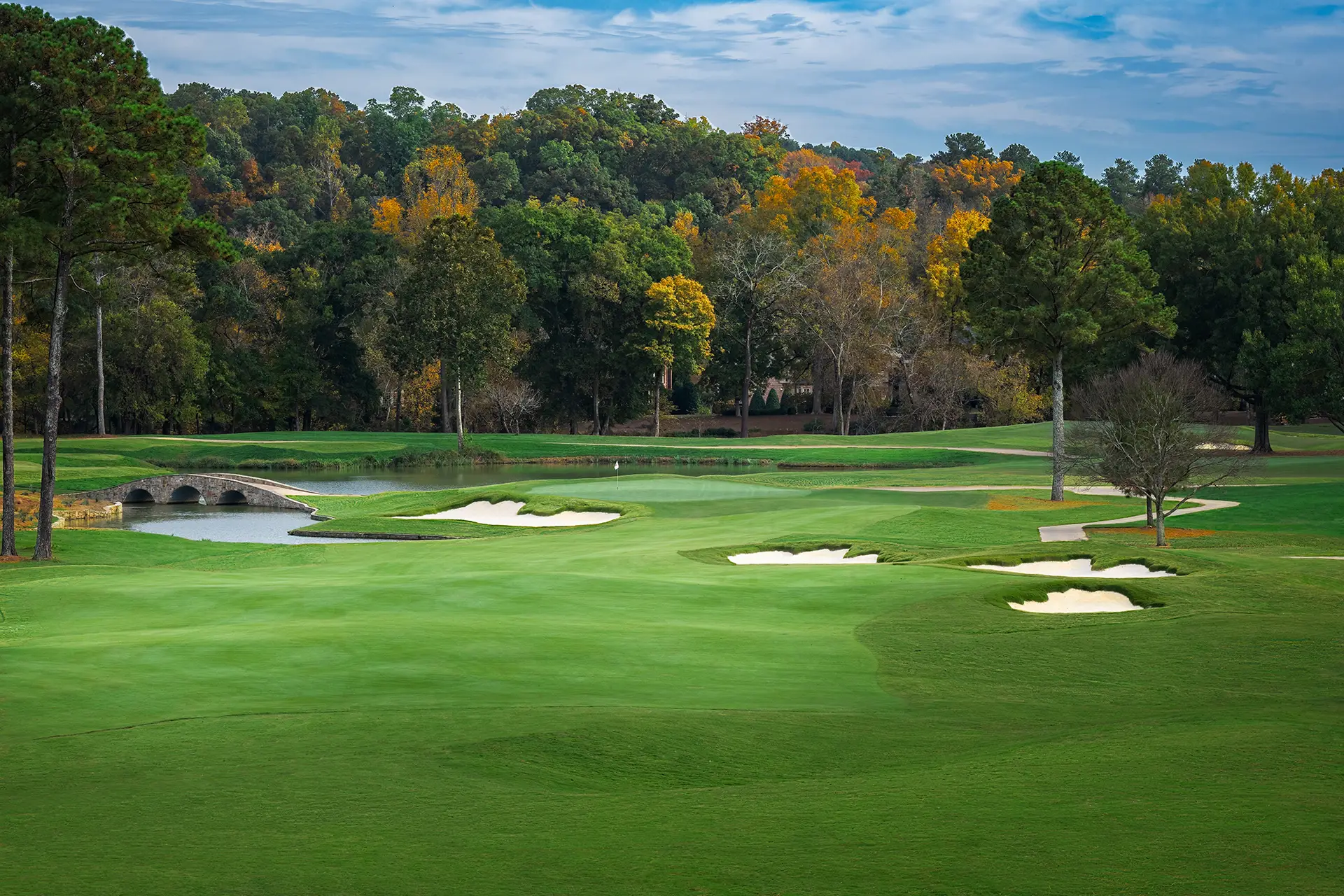
In particular, Davis reconstituted the 3rd hole—once a par five—into two holes: a short par three and a par four that doglegged left to a new green that was built just along the banks of the Chattahoochee River. The subsequent two holes, the former 4th and 5th, were combined to create a par five that gently bends to the right, following the river’s edge. The 12th hole, once a par four, was extended 80 yards and turned into a par five; and the par-three 17th stayed as a one-shotter, but its green was rebuilt and now acts as a modified punchbowl.
Some of these changes were made to positively impact playability and to provide greater diversity in the sequencing of holes; however, as Davis acknowledges, most modifications were made to allow the course to better connect with the dynamic and beautiful land that surrounds it. “With the great trees, the rolling land, distinct ridge lines, and the river, it is such a majestic site,” he says, “and we wanted the golf course to look and feel like it is just a part of that.”
Saddlebrook Resort—Wesley Chapel, Fla.
As part of a comprehensive resort renovation that has approached $100 million, the golf courses at Saddlebrook Resort just outside of Tampa are currently undergoing a notable redesign helmed by Rees Jones (with significant contributions made by Jones’s associate, Bryce Swanson). The two 18-hole courses are being condensed into three 9-hole loops—with each one returning to the clubhouse—while a parcel of land that was once home to four holes has been reclaimed to bolster the resort’s golf school. Now, that area is home to a series of chipping greens, putting greens, and a sprawling driving range with a practice fairway. “It’s really going to enhance the school,” Jones says.
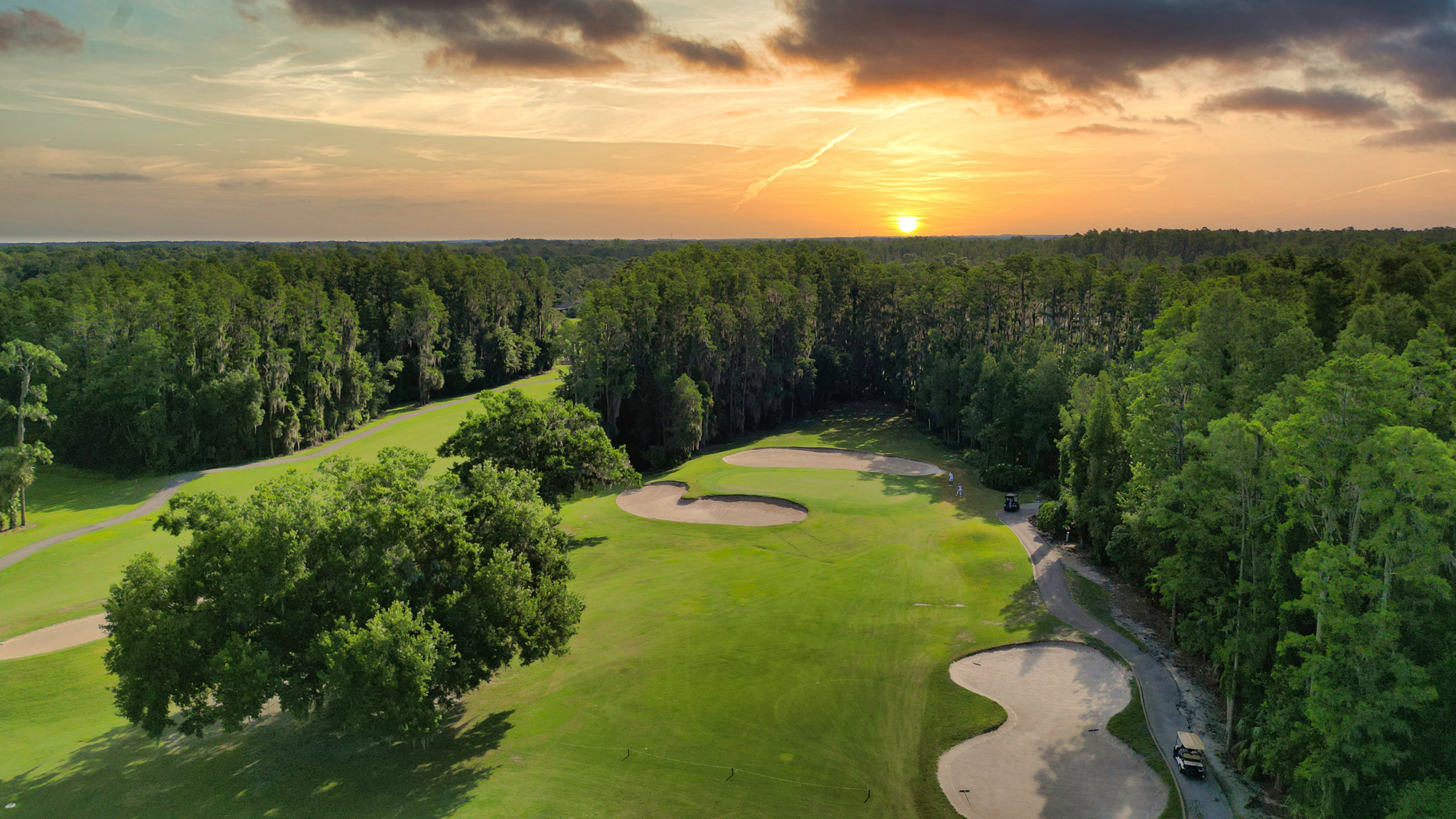
As for the courses that remain, each of the nines measure slightly more than 3,500 yards, which was by design, as they were intended to be interchangeable when creating a championship 18-hole course. They also each feature bunkers that have been rebuilt, repositioned, and restyled to reflect the character of the bunkers created by Alister MacKenzie or A.W. Tillinghast a century or so ago. In Jones’s vernacular, they’re “windswept.” Yet, perhaps most notably, the courses are going to showcase dynamic new greens. “There’s more attention being made to courses that are on flat ground to change the character and size and angle of the greens,” Jones explains.
“It’ll be a brand new golf course for them,” he continues, acknowledging that golfers who were familiar with the previous layout won’t encounter sequences of holes that all look and play similarly. Now, according to Jones, the redesigned 9-hole loops showcase holes with “more individual character.”
The Match Course at PGA National—Palm Beach Gardens, Fla.
Some might consider the debut of The Match course at PGA National to be old news—the Andy Staples design opened for play in 2021—but it exemplifies what is possible when architects, owners, and developers are willing to think outside of the box when it comes to redesign projects.

Utilizing much of the land that previously comprised The Squire course, Staples embraced the etch-a-sketch model, effectively wiping the slate clean and building a fresh course (with new irrigation systems) in place of the dated and poorly draining Fazio design that had occupied the site since 1981. As its name suggests, The Match course was design with match-play in mind, which means the holes lack par designations and also feature ribbon teeing grounds that can alter the length of some holes by almost 100 yards. The course is also sparsely bunkered. In fact, some holes are entirely devoid of sand. In place of traditional traps, Staples utilized a lot of mounding, where uneven lies can lead to off-balance swings (or unpredictable outcomes)—challenges that equally affect highly skilled as well as not-so-skilled golfers.
“With a wedge in your hands and having a side-hill lie 80 yards away from a perched green, it makes you feel engaged,” Staples says. “Suddenly, the course doesn’t feel like it’s [only] 5,800 yards long.”
St. Patrick’s Links at Rosapenna Hotel & Golf Resort—Carrigart, Co. Donegal, Ireland
By now, you’re likely familiar with St. Patrick’s Links at the Rosapenna Hotel & Golf Resort but the course—and the redesign project that produced it in 2021—still deserves a shout out. Those in the know (by that we mean golf travelers who have traversed the rugged and windswept linksland along Ireland’s northern coast) will tell you that the land just south of the original Rosapenna resort, where the property’s duo of original courses once sat, represented perhaps the most dynamic canvas for links golf. Unfortunately, the two layouts that occupied that land never made good use of the topography—their fairways were simple, narrow, and many ran parallel to one another.

That changed in 2019, when Tom Doak began rerouting a single course across the 350 acres that previously held two. Preexisting fairways were incorporated into four of St. Patrick’s new holes; the rest are freshly carved and routed to ensure the course utilized the best parcels of land. “It’s definitely an advantage to have more great land to work with,” Doak said not long after the course opened for play. Moreover, the architect acknowledged that the finished layout is easily walkable even though it includes golf holes positioned in far-flung corners of the property.
Perhaps best of all, the project—and the notoriety of Doak’s name and his reputation for building award-winning courses—has since introduced plenty of traveling golfers to a region of Ireland that they’ve likely never seen—an area of the country that still looks and feels how much of Ireland did when Doak first visited after graduating from college in the early 1980s. “Once you get off the main byways,” he says, “the last 20 or 30 miles going up to Rosapenna still feels like it did 40 years ago.”
Jameson Golf Links—Portmarnock, Co. Dublin, Ireland
For years, many who played the golf course at Portmarnock Hotel & Golf Links, just outside of Dublin, finished their rounds feeling underwhelmed. The nearby Portmarnock Golf Club sparkles thanks to its history and a dynamic links layout, whereas the more modern Bernhard Langer design, circa 1995, was relegated to also-ran status.

In 2023, as part of a broader rebranding of the entire property, the course was comprehensively renovated and redesigned by Jeff Lynch, the director and senior architect at the (re)Golf design firm. As a part of that work, the vast majority of sod-wall bunkers that once sabotaged many players’ rounds were replaced with pot bunkers that, while still penal, are now notably friendlier. The bigger changes were made through a stretch of holes that play through and around the dunes, starting with the 8th—a par four that previously doglegged to the left but now plays straight away to an elevated green. From there, a good portion of the back nine was rerouted, which not only changes how the course plays but also introduces more frequent views of the adjacent Irish Sea.



